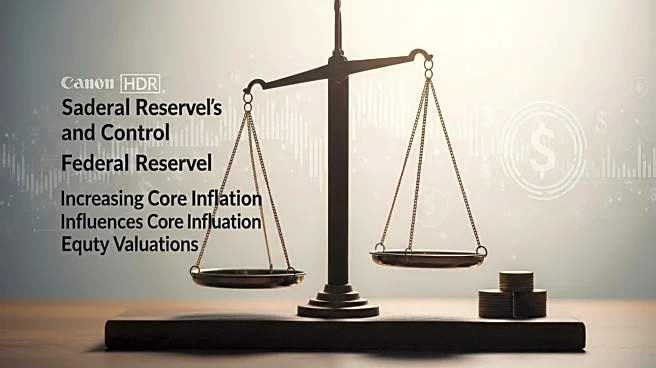What's Happening?
The post-Labor Day market landscape has highlighted a significant divergence between European and U.S. equities. European markets have experienced gains due to corporate buybacks, geopolitical factors, and sector-specific breakthroughs, such as defense and pharmaceuticals. In contrast, U.S. investors are cautious due to the Federal Reserve's upcoming rate-cut decision and mixed economic data. The U.S. labor market showed slower growth with only 73,000 jobs added in July, and inflationary pressures remain a concern. The Federal Reserve's August minutes revealed a divided policy outlook, with some governors advocating for a rate cut while others opted to hold rates steady. Market expectations now suggest a high probability of a rate cut in September.
Why It's Important?
The divergence between European and U.S. markets reflects broader global economic dynamics. Europe's gains are supported by sector-specific growth and accommodative monetary policy, creating a favorable environment for equities. Meanwhile, the U.S. faces challenges from a slowing labor market and inflation risks, which could impact economic growth. The Federal Reserve's decision on interest rates is crucial, as it will influence investor sentiment and economic stability. A rate cut could stimulate growth but may also risk unanchoring inflation expectations. Investors must strategically position themselves to navigate these uncertainties, balancing regional exposures and sectoral imbalances.
What's Next?
The upcoming week is critical for market resilience, with U.S. nonfarm payrolls for August and European GDP figures expected to provide clarity on economic trends. The Federal Reserve's September meeting will be pivotal in determining whether policymakers prioritize inflation control or risk a deeper economic slowdown. Investors will need to monitor these developments closely to adjust their strategies accordingly, focusing on sectors insulated from rate volatility and leveraging European momentum.











